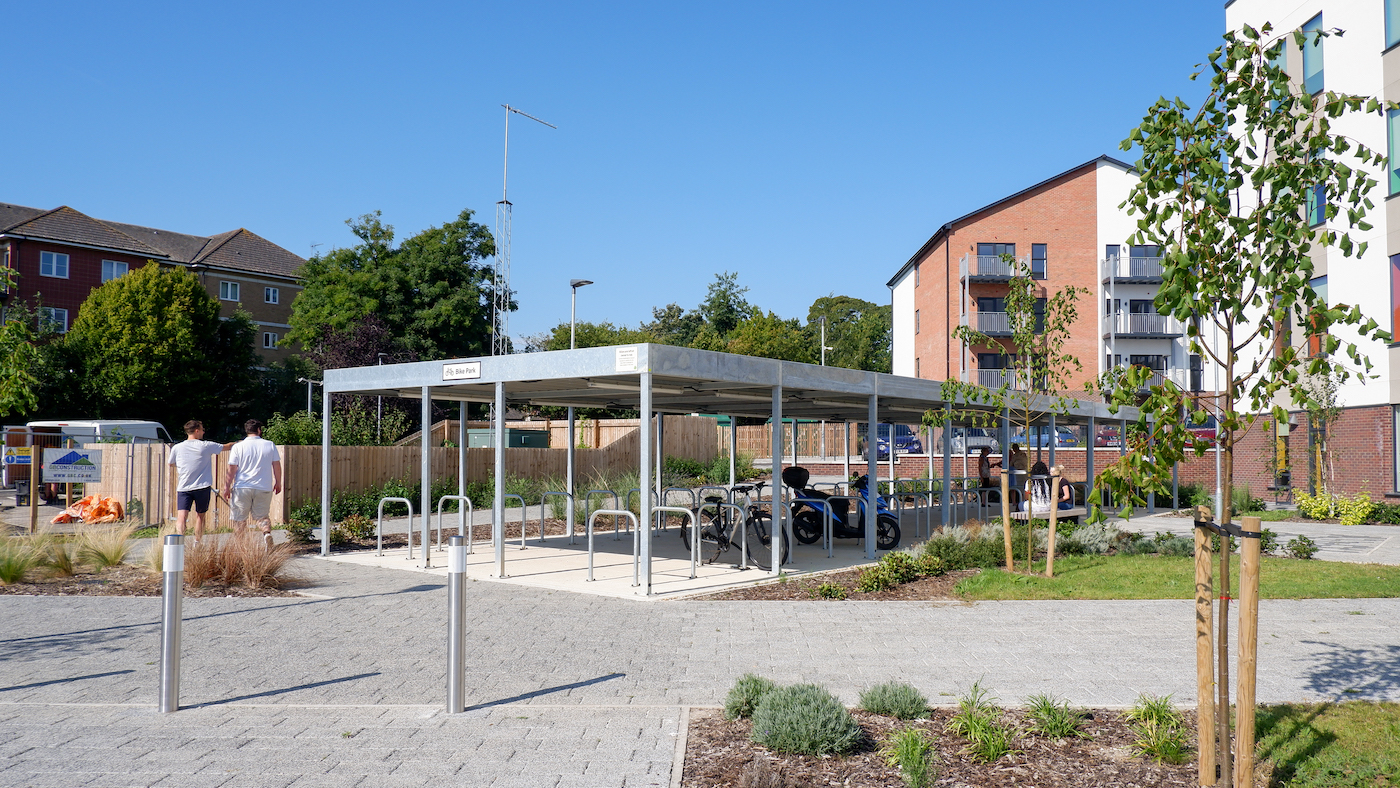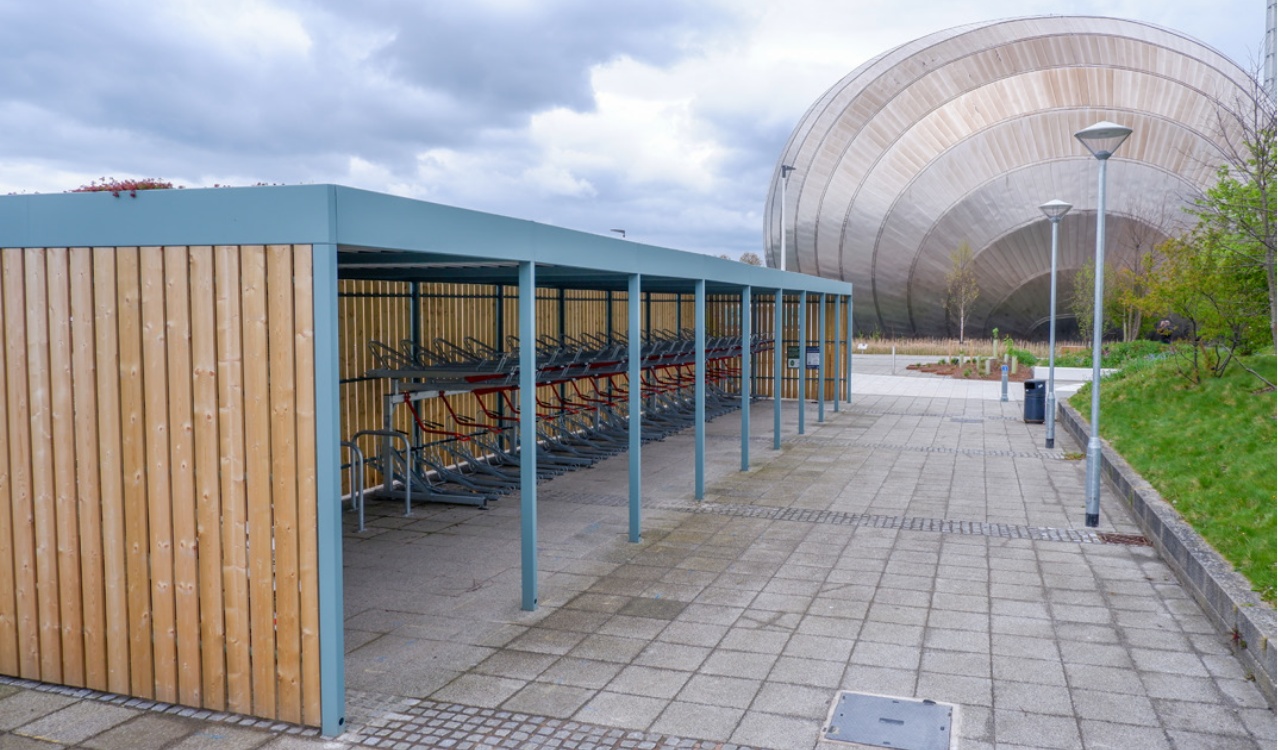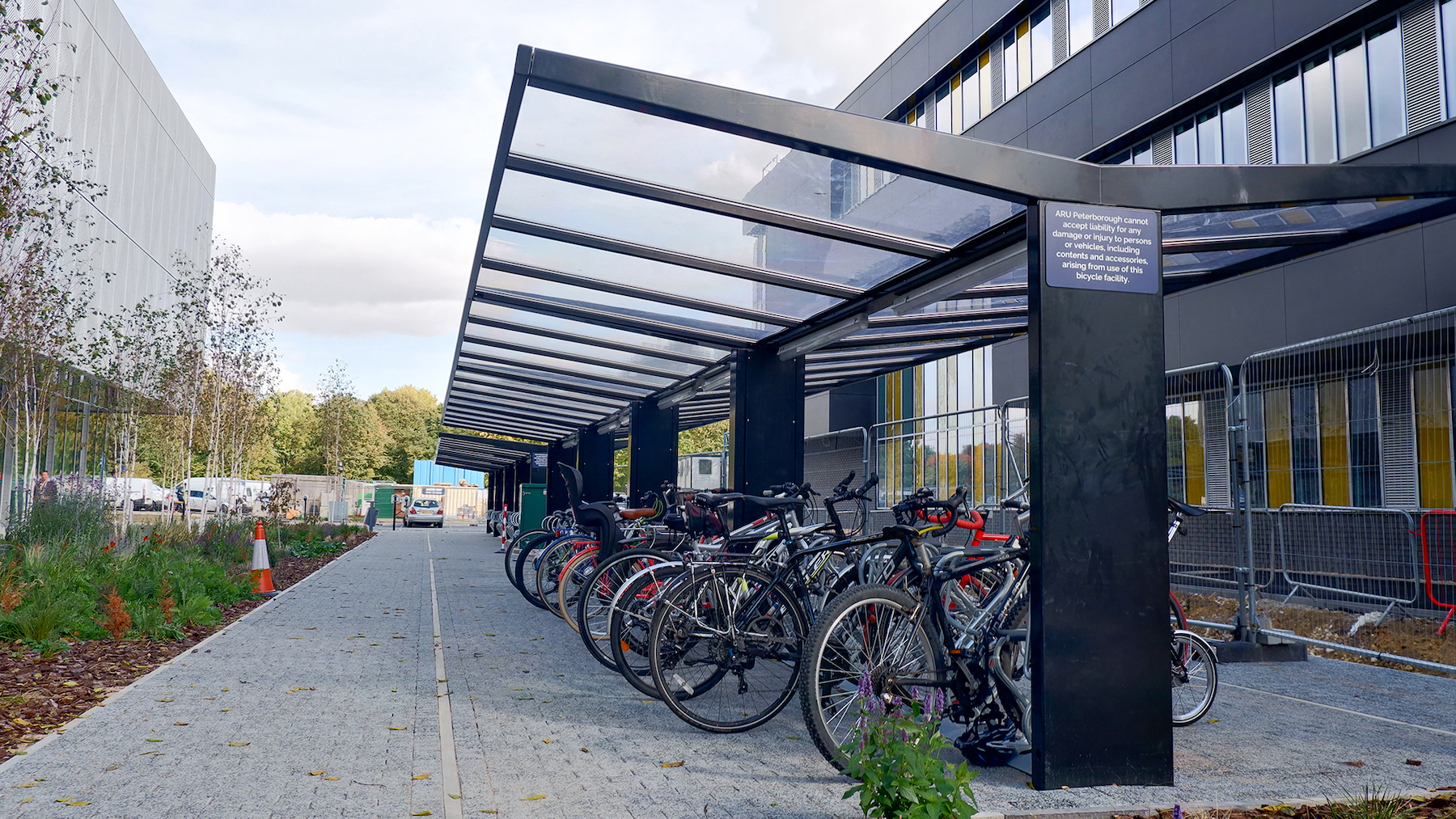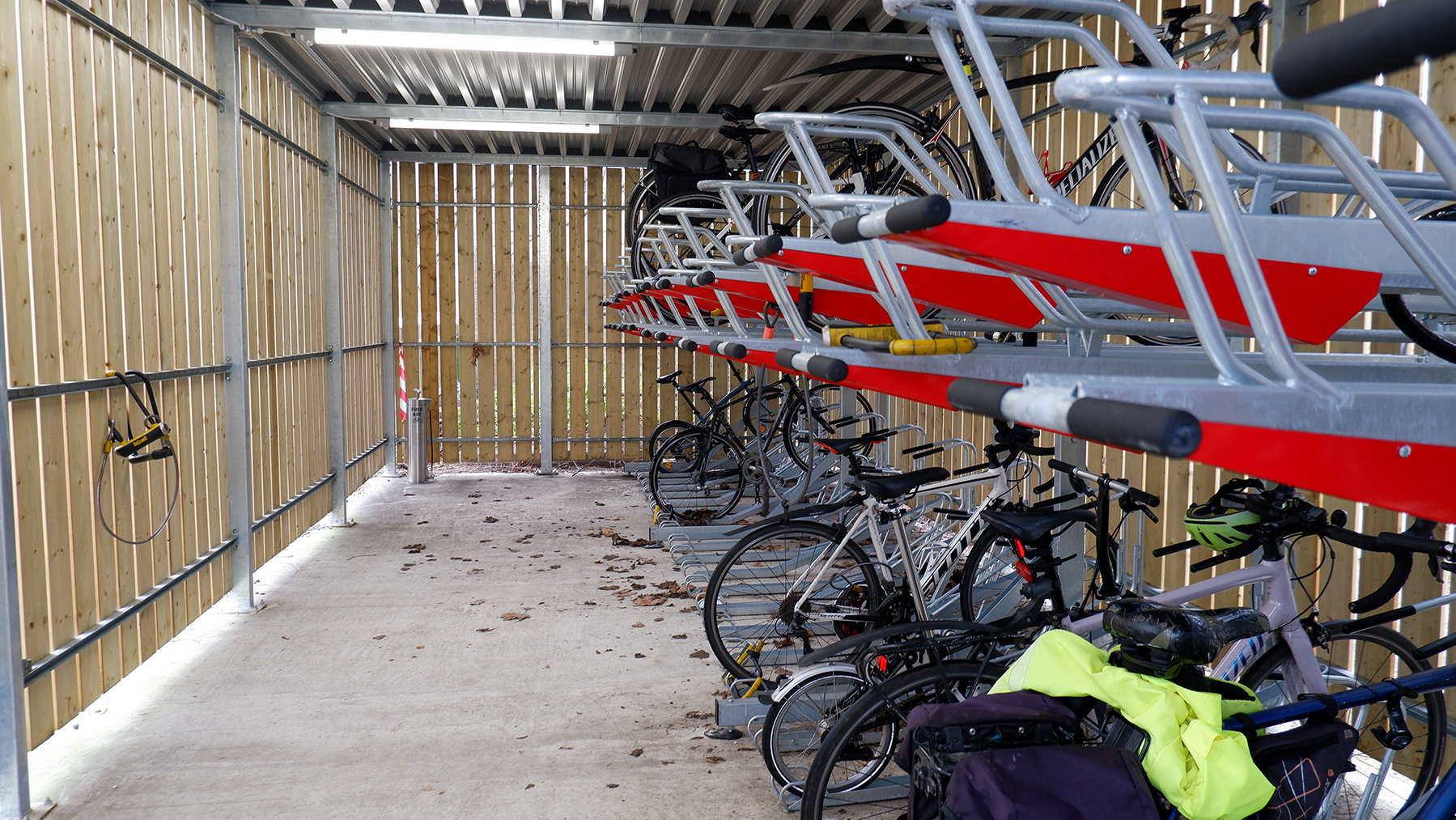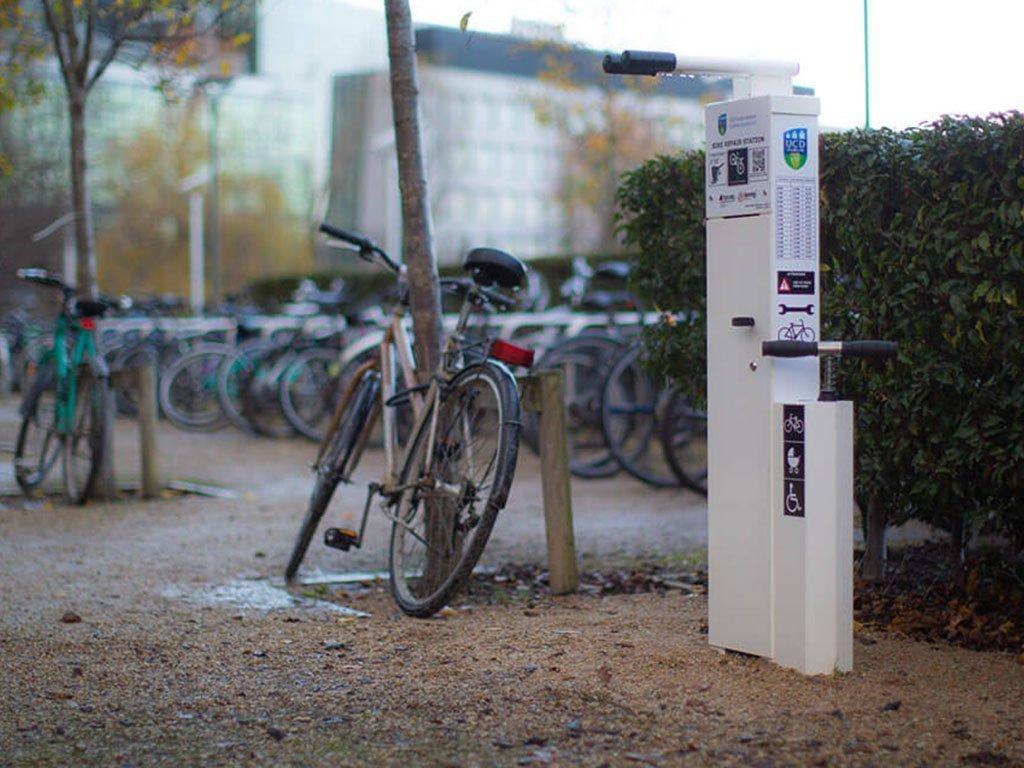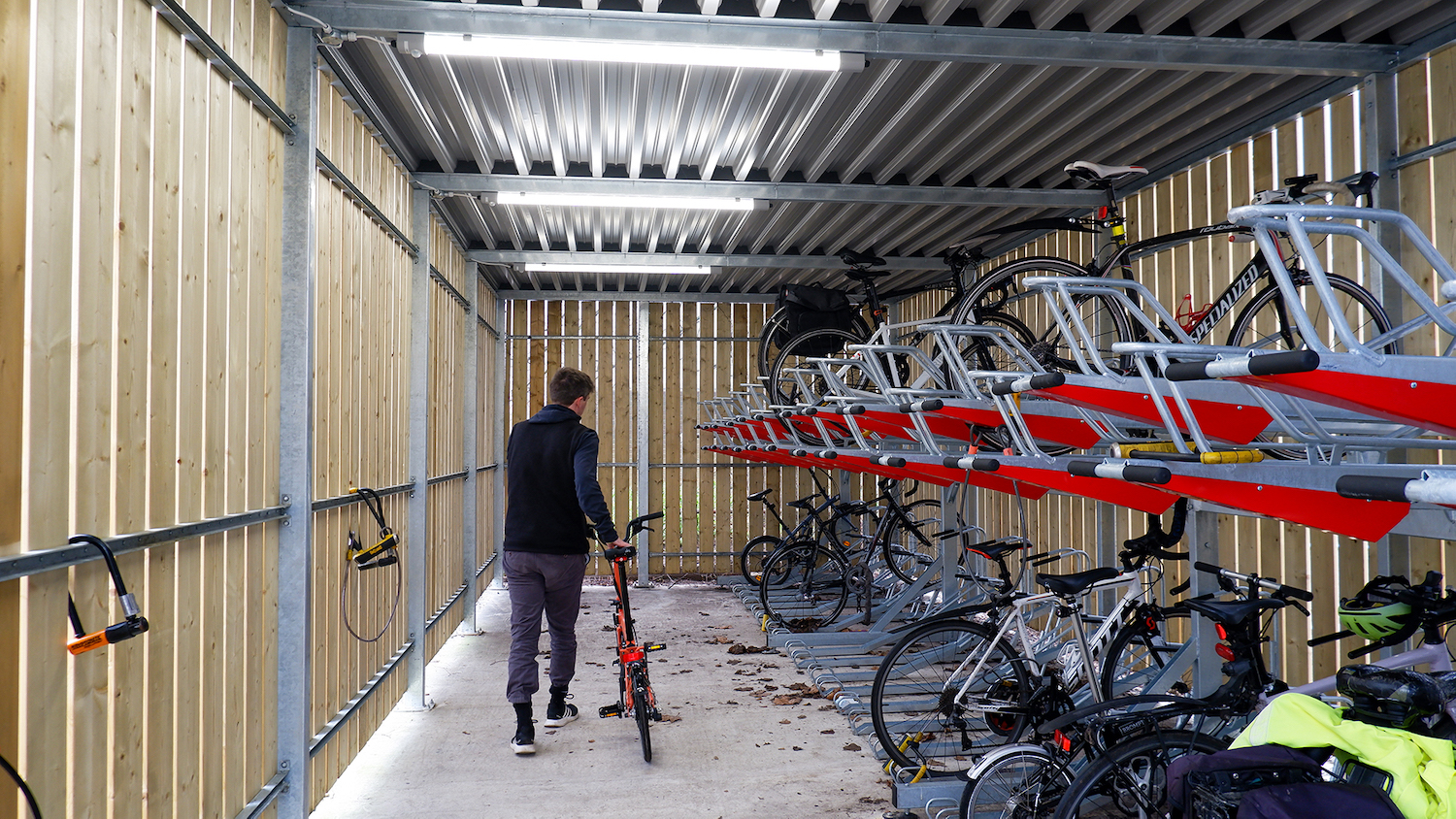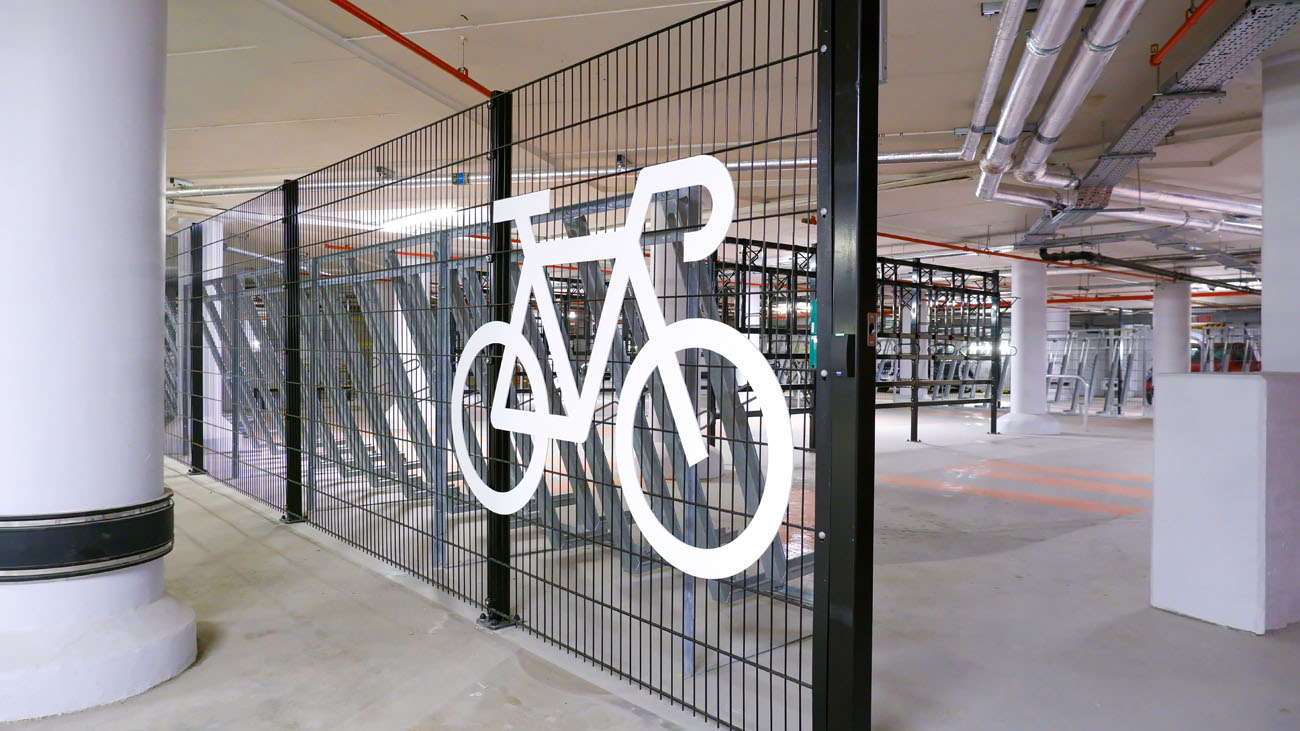Bike shelters and canopies are essential for outdoor cycle parking projects.
While racks and stands on their own are adequate for some short term parking – such as supermarkets or high streets – there is rarely an instance where not using some kind of canopy or shelter is preferred.
Protection can come in the form of open access canopies, enclosed Cubic-style shelters, caging, cycle hangars, or polycarbonate shelters, and helps to keep bicycles protected from inclement weather, and can grant extra security too.
But installing the right shelter for the right project is vitally important for effective cycle parking. The location, capacity, and bike racks are all aspects that need to be properly considered.
With that in mind, here are three key questions you should ask yourself when deciding which bike racks to use in your shelter or canopy.
